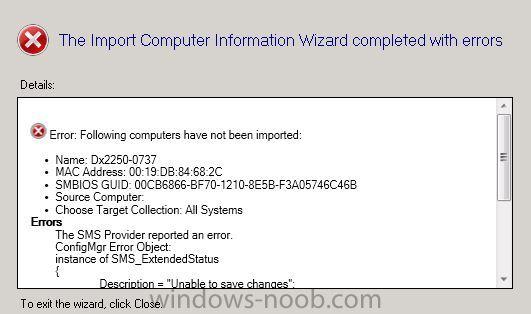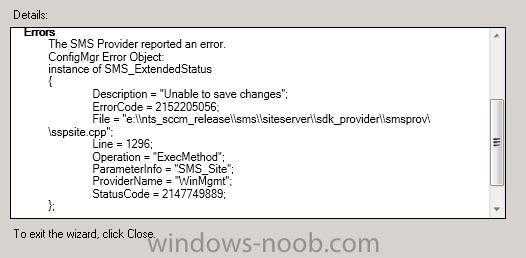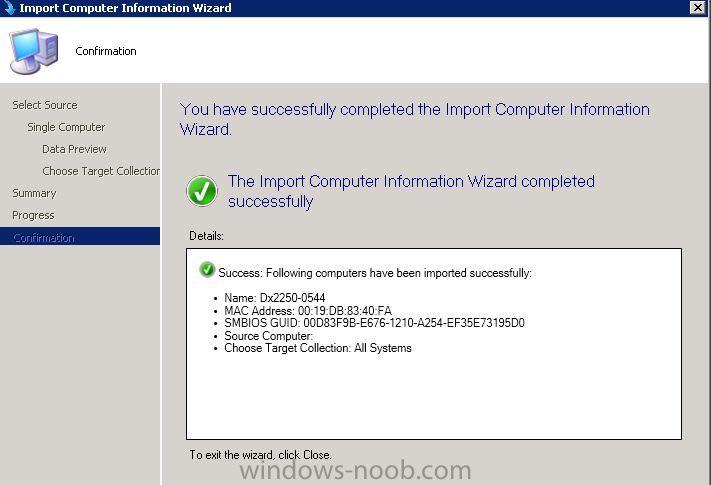Search the Community
Showing results for tags 'device'.
-
Hey Guys / Niall - I'm trying to script something which I've done parts of in the past, but not together at once and need some assistance, please... Overall, I'm trying to add hostnames as direct members to a different collection referenced on the same row of a CSV source. Below is an example of the CSV source which states the hostname in the first column and its domain in a 2nd column. A collection already exists per domain which is "Prod Servers: domainfqdn". For example, below is a similar CSV with headers: svr_name,svc_domainfqdn SYSTEM1,DOMAIN.5.com SYSTEM2,DOMAIN.6.com SYSTEM3,DOMAIN.4.org SYSTEM8,DOMAIN.6.local The desired result is that once the script executes, the following occurs: The hostname "SYSTEM1" is added via direct rule to the collection "Prod Servers: DOMAIN.5.com" The hostname "SYSTEM2" is added via direct rule to the collection "Prod Servers: DOMAIN.6.com" The hostname "SYSTEM3" is added via direct rule to the collection "Prod Servers: DOMAIN.4.org" The hostname "SYSTEM8" is added via direct rule to the collection "Prod Servers: DOMAIN.6.local" I've added systems to a single collection many times before using powerShell using something similar to the below, but am at a loss for how to add to multiple collections all within the same source. I've already created the collections for each domain, so no need to have the script check for them or do so. Any suggestions? Thanks!
- 6 replies
-
- collection
- powershell
-
(and 2 more)
Tagged with:
-
How can you quickly figure out what collections are associated with a Computer? I am trying to figure out what policies are being given higher priority by viewing what collections they are associated with. Does anyone know how to find this information?
- 23 replies
-
- SCCM 2012
- collections
-
(and 2 more)
Tagged with:
-

AD User Groups Listed (Sometimes) But Do Not Work
BzowK posted a topic in Configuration Manager 2012
Good Morning Guys / Niall - I need help with an important issue, please. Our domain currently has numerous AD Groups for both devices and users. Our SCCM environment (2012 R2 SP1 CU3) has discovery set to add all of them and the default user collection "All User Groups" has 6,396 members from which I may search and locate individual groups. However - when adding a query to add a user group to a User Collection (or group with systems to a Device collection); none of the members are added to the collection. Below is the statement used which I typed in to directly specify the group: select SMS_R_USER.ResourceID,SMS_R_USER.ResourceType,SMS_R_USER.Name,SMS_R_USER.UniqueUserName,SMS_R_USER.WindowsNTDomain from SMS_R_User where SMS_R_User.UserGroupName = "company\\ABQ-Techs" If I choose to build the query via wizard, choose User Resource, User Group Name, then click Value (which should list all User Groups), only about 10 are listed - perhaps less than a percent of the ones we have. The same applies to Device Collections as when I try to create a query to include devices in a collection and click Value after setting "Security Group Name" or "System Group Name", I get just a handful of items to pick from. I found that this post describes the exact same issue, but there's no resolution listed despite many seemingly having the issue. All discovery properties are basically at defaults and logs don't seem to show any errors. I just ran a full discovery then edited a copy of the log to include only events during the process plus change sensitive info which is attached. Any suggestions? Thanks! -
I've searched around both through Google and through here and I can't seem to find an answer. It seems I may have to dive through SQL to do this. Users in our enterprise rotate use of machines often. This causes issues for user/device affinity and a couple of questions come to mind. Can all affinities of a selected collection be reset? Clicking "Manage Affinity" on a collection only brings up the Approve/Reject dialog. If a users is 'administrator defined' rather that 'Usage agent defined', does that ever get removed? Thanks! Edit: SC2012 R2
-
I've been getting my info from this site for some time now. Great stuff and a big thank you for that! But I've come across a problem which I can't seem to find a solution for. I want to deploy software through AD security groups in which I put our computer objects. SCCM doesn't seem to cope with that though. You can create a user collection and link it to a security group, but then only users which are linked to the group get the software. That works just fine. I tried putting computer objects in there, but they won't get it. Only users will. Since I want the installation to be computer based instead of user based, that doesn't work for me. I then tried to create a device collection (which seems more logical to me than a user collection) and I thought I chose the perfect membership rule by using "System Resource/Security Group Name". But to my surprise no security groups are found. When I enter a wildcard in the value box, I only get to see client names. No security groups whatsoever. Security groups seem to be only linked to user collections. Why can't I see them? If the option is there, I should get to see them, right? This part really confuses me. Of course I can create device collections within SCCM as a solution, but I want to be able to manage software deployment through AD so we can drag a computer to a security group in order for the client to get the software. Is this the way it is designed, or am I overlooking something here? Or is there a way to get around this? I really hope there is, but I can't seem to find much about it on the Net. I don't understand why this doesn't seem possible. It just seems so logical. Any help/thoughts would be greatly appreciated.
- 4 replies
-
- ad
- deployment
-
(and 5 more)
Tagged with:
-
Hi All, Is there a way to force a task sequence to rerun even if it had run successfully before on the PC? My situation is as follows: PC1 has Windows 7 installed through the SCCM task sequence. PC1 has issues, and requires its HD wiped and given a fresh build. Essentially, I'd like to be able to add PCs to a collection that forces those PCs to rerun the task sequence, despite it's previous successes/failures. PC1 does not rebuild in this instance as it already has the task sequence as 'installed' in the Software Center. Maybe I'm overlooking something obvious here, but if someone has done this before, a bit of help would be appreciated.
-
Hi, I am having issues trying to import one of my test clients into SCCM 2012 RTM. I have been using this physical machine repeatedly to test against the OS deployment\capture sequences within SCCM. Until now I could import the device via a single computer or file based import using MAC &\or GUID, but now it keeps returning ErrorCode=2152205056 with description "unable to save changes". I think the error is related to a MAC recorded in the SQL database that is not getting deleted correctly when I delete the device from within SCCM, but I cannot confirm this as SQL is completely unknown to me. I know it is not a question of rights, as I can still import other devices, delete the import and then reimport them. Does anyone have any idea of how to check this from within SCCM or perhaps via a SQL query? Cheers & thanks in advance, AB




